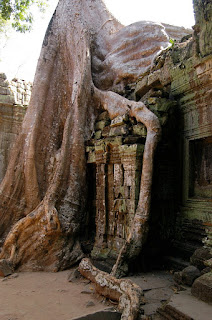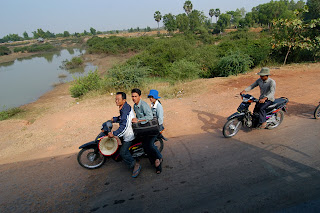The Taj Mahal in its finest glory.
It is apt and opportune to capture moments in my life, the way I see and experience them. These are indeed unique and precious moments that cannot be repeated or reverted to once they are gone. Besides text, my photographs serve to freeze and record my "Moments In Time" for posterity.
Monday, June 30, 2008
A man and his family on a visit to the Qutab Archaelogical Area. This dramatic silhouette was a grab-shot I took when the opportunity presented itself. I like this photo for its strong shapes, with the family placed off-centre. The black walls on both sides heightens the mystery and drama of what this archaelogical site can offer. The projections on the arch bids a welcome to all friendly visitors.
This porter at the railway station in Lucknow balances three pieces of fully-laden luggage precariously on his turbaned head while carrying another piece in his right hand. This seems the norm at any railway station in India. Prior to this, there is a haggling over the handling fee on a piece-meal basis. So now you know why he has four pieces of luggage.
One can be forgiven for thinking that these are soft-drinks for sale alongside the refreshing coconuts in the background. We had stopped for a short break during our 5-hour journey along the trunk road from Thailand to Siem Reap. No, these are more potent than your cherryade, lemon-tea or orange drink. The long-nosed funnels are a dead give-away - yes, PETROL for motorcycles.
Saturday, June 28, 2008
This is Siem Reap in Cambodia, one of our poorer cousins in ASEAN. I was 'shooting from the hip' from a moving bus but with a wide-angle lens, an aperture of f/7.1 and a shutter speed of 1/500 sec, the picture is sharp and the depth of field shows all the details from foreground to the background. The huge vats are used for the fermentation of soya beans, salted vegetables and fish sauce.
Friday, June 27, 2008
The last passenger has left Pulau Ubin and the boats are moored alongside the jetty, tied securely together to ensure safety. As the lone boatman makes a cursory check on his lashings, the sun dips below the horizon and day is done. Sleep well my dear boatmen, for tomorrow is another day and your good health, vitality and experience are needed to bring life once again to nostalgic Pulau Ubin.
Subscribe to:
Posts (Atom)

















































